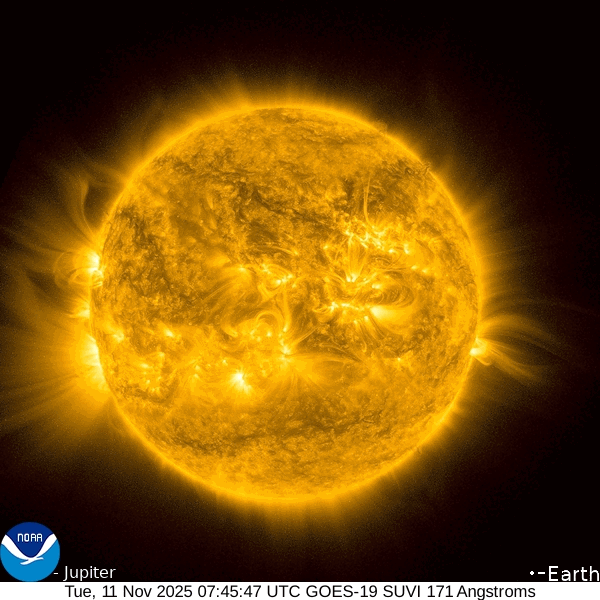A series of outbursts from the Sun, referred to as coronal mass ejections, ignited stunning auroral displays Tuesday night. The outbursts propelled a surge of material from the Sun, which included charged particles with a potent localized magnetic field, towards Earth at speeds exceeding 1 million mph, or over 500 kilometers per second.

Satellites identified the latest significant coronal mass ejection, which was accompanied by a bright solar flare, early Tuesday. It was projected to reach Earth by Wednesday.
“We’ve already experienced two of the three expected coronal mass ejections arriving here at Earth,” stated Shawn Dahl, a forecaster at NOAA’s Space Weather Prediction Center in Boulder, Colorado. The first two waves “packed quite a punch,” Dahl noted, and were “significantly stronger than we had predicted.”
The storm triggered northern lights that were observable as far south as Texas, Florida, and Mexico on Tuesday night. Another display of northern lights may be seen Wednesday night.
The storm arriving Wednesday was described as the “most energetic” among all the recent coronal mass ejections, Dahl commented. It’s also moving at a higher velocity, fast enough to traverse the 92 million-mile distance between the Sun and the Earth in less than two days. Forecasters predict a G4 level, or severe, geomagnetic storm from Wednesday into Thursday, with a slight chance of a rarer extreme G5 storm, a phenomenon that has only occurred once in the last two decades.

The Aurora Borealis illuminates the night sky over Monroe, Wisconsin, on November 11, 2025, during one of the most powerful solar storms seen in decades.
Credit:
Ross Harried/NurPhoto via Getty Images
The sudden onset of a surge of charged particles from the Sun can induce disturbances in Earth’s magnetic field, impacting power systems, degrading GPS navigation signals, and disrupting radio communications. A G4 geomagnetic storm can instigate “possible widespread voltage control issues” in terrestrial power grids, as noted by NOAA, alongside potential surface charging issues on satellites operating above the protective layers of the atmosphere.
Predicting the exact effects of a geomagnetic storm is challenging until it reaches Earth’s vicinity. Multiple satellites located a million miles from Earth in the direction of the Sun are equipped with sensors to measure the solar wind’s speed, its charge, and the orientation of its magnetic field. This data aids forecasters in anticipating what to expect.
“These types of storms can exhibit considerable variability,” Dahl remarked.

